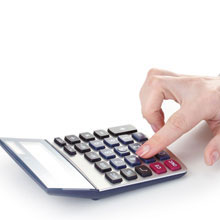
Working with a Designer
Know what to expect from your kitchen designer
While it’s common for people to feel intimidated around a kitchen designer at first, it’s important to remember that their #1 priority is designing a room that you’ll love. With that in mind, here are a few basics we’ve outlined for you; including things you can prepare to ensure the first meeting is a productive one.
Dealers and Designers
Many of our cabinet dealers offer in-house design services, while others partner with interior designers to help guide you through the process. Depending on the size of your project and your design needs, either scenario will help you arrive at your ideal space. If you engage your own interior designer, make sure that they are involved in the process from the beginning and have them work directly with the dealer to ensure a smooth transition between the design and order process.
What is the designer's role in my project?
The designer is responsible for creating a floor plan, elevations and perspective drawings, based on a detailed understanding of your needs. They will have the cabinet knowledge to recommend door styles, material selections, interior components and decorative trims. Typically, a kitchen cabinet designer associated with a dealership will be with you from the first conversation until the last piece of trim is installed. If you are working with an independent interior designer, their role may be more or less involved, depending on their knowledge of cabinetry components. Either way, it is paramount that a relationship is established between the designer and the dealer representative who will ultimately be responsible for the cabinet order.
How should you prepare for the first meeting?
There are several things you can do to ensure the first design meeting is a productive one. Start a folder of clippings from magazines of kitchens and details that you like. Start looking at appliances, get a feel for what you like and how much they cost — this will help to determine a budget. Become more aware of how you live in your current space—assess the good and the bad. This will help communicate your vision to the designer.
Outline Your Budget
It is important to establish a budget, taking into consideration all of the factors that will contribute to the project — such as demolition or additional purchases like appliances and counter tops. Share an initial budget outline with your designer early to give them a good idea of your project and its parameters.
Our Budget Calculator is a great tool that can help you transform your vision into tangible numbers.


